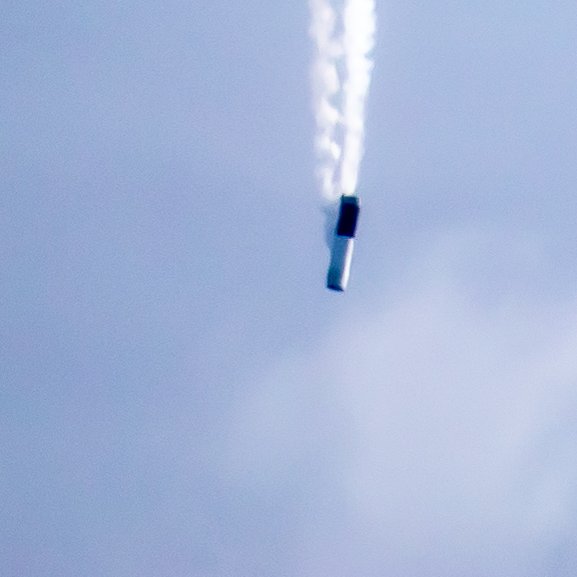e-FTW
New electron smell
Yeah, what is the square footage? Can one live in it? Build futuristic houses on the cheap? LolSend it to me.
I will pay shipping.
You can install our site as a web app on your iOS device by utilizing the Add to Home Screen feature in Safari. Please see this thread for more details on this.
Note: This feature may not be available in some browsers.
Yeah, what is the square footage? Can one live in it? Build futuristic houses on the cheap? LolSend it to me.
I will pay shipping.

We are not there yet. SpaceX has not launched humans yet on the DM-2 test flight. After that, and some more reviews I assume, they will get certified for operational launches.Finally, NASA can stop paying the Russians for rides. Over-paying is more like it.
4:27 Watch Doug’s non-verbal reaction when he mentions that loading fuel while they are onboard will be “a different experience”. Ever so-slight bop.The DM-2 crew speaking after the IFA:
The most interesting section of that article to me, quote:Article says all went well
SpaceX releases preliminary results from Crew Dragon abort test – Spaceflight Now
The most interesting section of that article to me, quote:
”The Crew Dragon began its launch escape maneuver at 10:31:25 a.m. EST (1531:25 GMT) — initiated by a low setting of an on-board acceleration trigger — when the Falcon 9 was traveling at a velocity around 1,200 mph (536 meters per second), according to SpaceX.
Eight SuperDraco thrusters immediately pressurized and ignited as the Falcon 9 rocket’s first stage engines were commanded to shut down as part of the abort sequence.
The escape engines on the Crew Dragon produced nearly 130,000 pounds of thrust at full power. The SuperDracos performed flawlessly, SpaceX said, accelerating the capsule away from the top of the Falcon 9 at a peak acceleration of 3.3Gs.”
There is a discussion on reddit that, as I understand it, concludes that the abort sequence “trigger” was a vehicle acceleration value at a specific point in the flight that was pre-programmed to be just outside of the standard flight parameters. The moment that acceleration value was reached the Super Dracos ignited and the booster engines were all shut down, the capsule separated, etc.
If I have that wrong, please correct me.
But to make the scenario realistic, wouldn’t it make more sense to program the rocket to produce an off nominal (low) acceleration value at a specific point — thereby simulating an engine(s) out failure — and that would trigger the abort sequence to start?I think it was the other way around, they lowered the trigger value so a normal part of the launch caused an abort.
But to make the scenario realistic, wouldn’t it make more sense to program the rocket to produce an off nominal (low) acceleration value at a specific point — thereby simulating an engine(s) out failure — and that would trigger the abort sequence to start?
What is the point in starting the abort sequence with a nominal vehicle acceleration value that in real life would never trigger an abort?
Not trying to be argumentative, just trying to understand.
Article says all went well
SpaceX releases preliminary results from Crew Dragon abort test – Spaceflight Now
I wonder if that is a touched up version of this video or a separate camera:I like this photo of the SuperDracos firing just before separation even better than the one posted a few days ago.
It's from Mongo's linked Spaceflight Now article.
Whatever equipment took this, it must have another shot taken a few hundredths of a second later that shows the Dragon pulling away from the booster. That would be the one I'd like for my next black SpaceX T shirt!
View attachment 503935
I see that most of the comments on reddit focus on whether those artifacts go back to Elon or Ebay. I'm pretty certain that SpaceX and NASA will get involved. Those components played a significant role during the successful IFA so they'd likely want to get them inspected. This got me curious about the different doors and location of the parachutes. The door that drifted ashore had the Dragon logo on top with 'DRAGON' written near the bottom, but that door wasn't part of the initial drogue chute deployment. That 'DRAGON' door is associated with the 4 main chutes and those are stored below the crew hatch. The 2 drogue chutes deploy from the panel just above the crew hatch labeled 'SPACEX'. It's remarkable to watch the drogues interact with the bottom door as the main chutes start their deployment. Slowing down the sequence reveals quite a ballet. I looked around for a proper diagram of Crew Dragon but couldn't find much with any detail. Towards the bottom of this Space.com article there's a short video with a good perspective on the chute deployment sequence.Somebody found the drogue chutes: Dragon’s parachutes washed up on the Florida coast : spacex
I'd guess that if you throw stuff into the ocean and leave, then it's salvage and finder's keepers.


